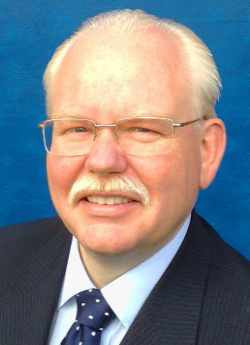报告人:Mark Tyrer 教授,英国考文垂大学
报告题目:Energy efficiency of building materials
报告时间:2019年12月10日上午9:00-10:00
报告地点:土木综合实验3号楼三楼会议室
 Mark Tyrer is a cement chemist and geochemist with interests in resource efficiency and environmental protection. He is currently Professor of Geomaterials and Executive Director of a Faculty Research Centre at Coventry University (appointed December 2016) where he conducts research on cementious materials.
Mark Tyrer is a cement chemist and geochemist with interests in resource efficiency and environmental protection. He is currently Professor of Geomaterials and Executive Director of a Faculty Research Centre at Coventry University (appointed December 2016) where he conducts research on cementious materials.
In 2003 he set up an independent consulting practice, through which he works as Research Manager for MIRO (the Mineral Industry Research Organisation) acting on behalf of the National Physical Laboratory and a range of industrial clients.He was appointed as a Director of the Association of Consulting Scientists in 2010. He currently serves on the British Standards committee B/516 (Cements) and recently on the Concrete Society Expert Working Group on the Analysis of Hardened Concrete.In addition, he is a former chairman of the Construction Materials Group of the Society of Chemical Industry and of the Cementitious Materials Group at the Institute of Materials, Minerals and Mining, on whose committees he remains active. Mark Tyrer was appointed as visiting Professor of Construction Materials at Coventry University in 2008 and received the IOM3 Pfeil award (2011) for work there on CO2 reduction in the cement industry.Mark Tyrer was elected as a Fellow of the Geological Society of London in 1993, a Fellow of the Institute of Materials Minerals and Mining in 2003, a Fellow of the Mineralogical Society of Great Britain and Ireland in 2013 and to the Min. Soc. Council in 2014. He is a Chartered Scientist and Charity Trustee.
报告摘要:
The energy efficiency of building materials divides into two distinct areas; the inherent ‘passive’ savings in energy and embodied CO2 of modern building materials and ‘active’ materials whose function is to conserve or moderate energy transfer in the built environment or harvest energy such as solar radiation. This presentation looks at the role of materials in reducing the energy of production and embodied CO2 in the built environment. The efficiency of Portland cement production has increased markedly over the last 30 years, such that a modern cement kiln operates at only a little above (3.2GJ/tonne) the theoretical thermodynamic minimum of ~2.8 GJ/ tonne of cement. Despite this efficiency, the huge scale of the cement industry (4.1 Gt in 2018) places a duty on the producers to reduce energy further. Practically, the greatest saving is to be made through reducing the amount of cement clinker used in concrete production. Numerous supplementary cementitious materials (SCMs) exist and some have been in use for many years, whilst new materials are developed regularly. Through the use of blended cements we have a range of Portland-SCM binders, some of which offer strength or durability advantages over Portland cement concrete. Focus in recent years has turned to non-Portland cement binders, such as Magnesia Cements, Celitement, Alinite Cement, Calcium sulphoaluminate systems, and Alkali Activated Systems / Geopolymers and each has a role to play in the future of construction. The presentation concludes by considering active energy conservation through the use of novel materials. Energy harvesting both by solar heat collection and photovoltaic panels incorporated in building cladding offers great potential over the life of a building. The incorporation of hydrogels in porous ceramics allows the inner layer of a building façade to offer evaporative cooling and the water in this case is replenished at night, when the air cools to below the dew point. To conclude, it is important to consider the use of phase change materials in regulating heating and cooling needs and the CO2 savings this implies.
联系人:张婷婷老师
联系方式:tingtingzhang@